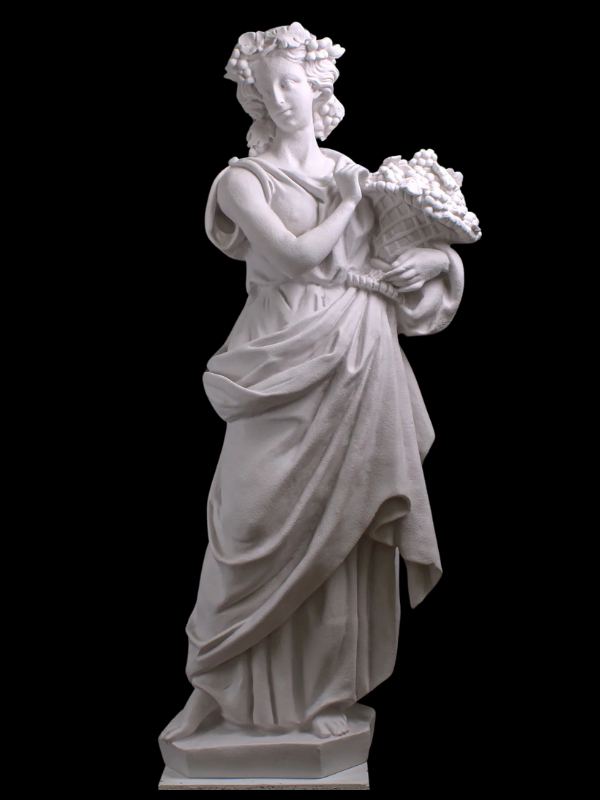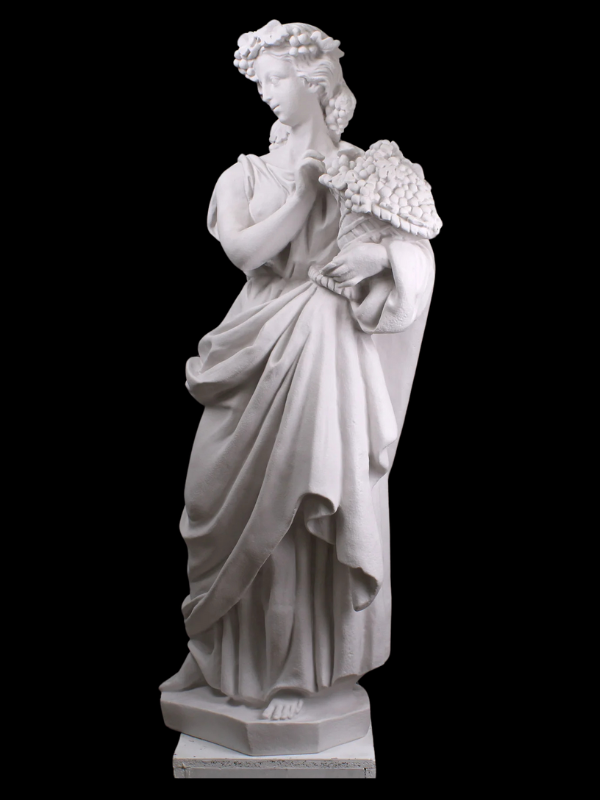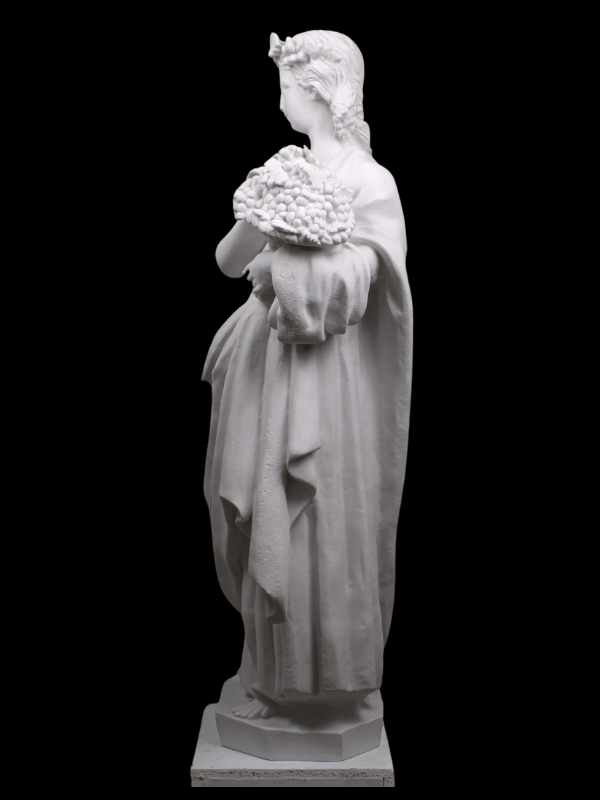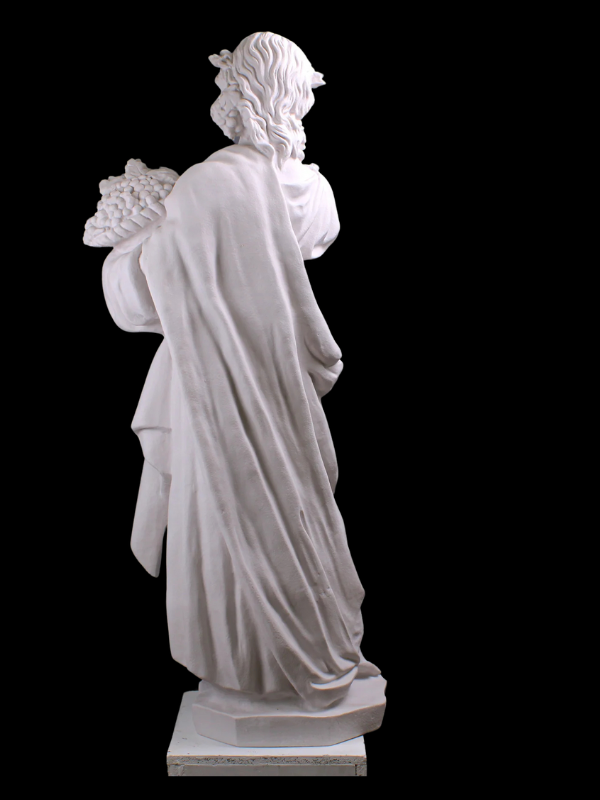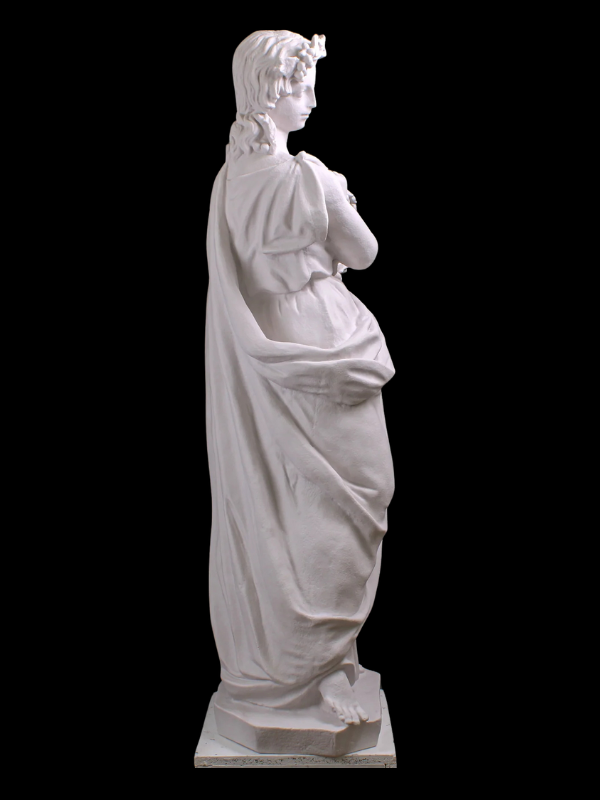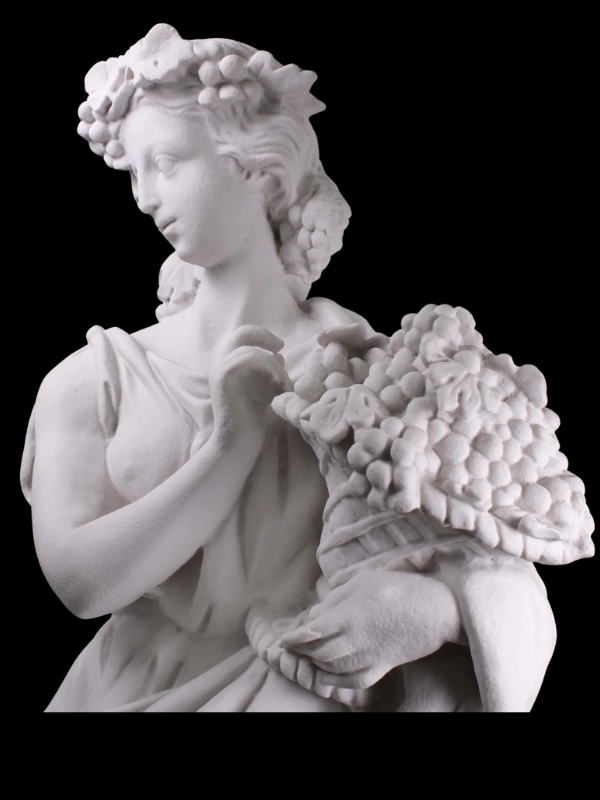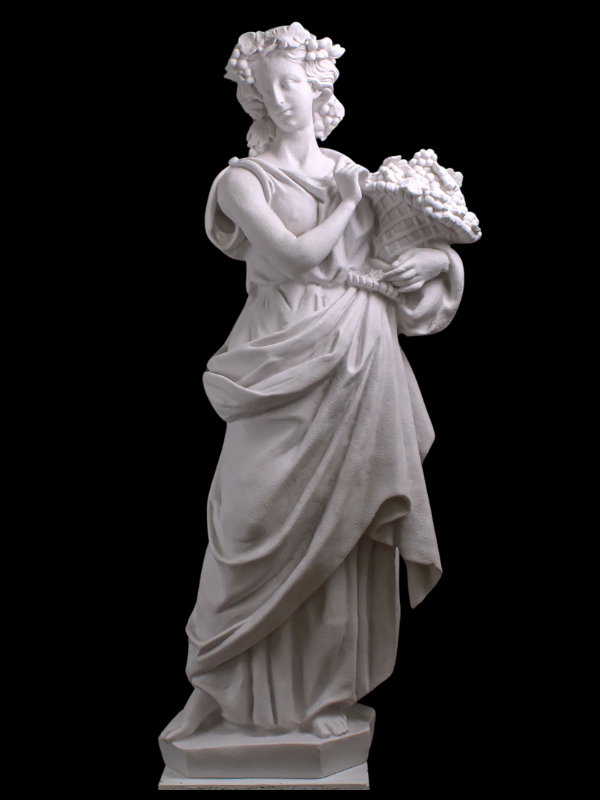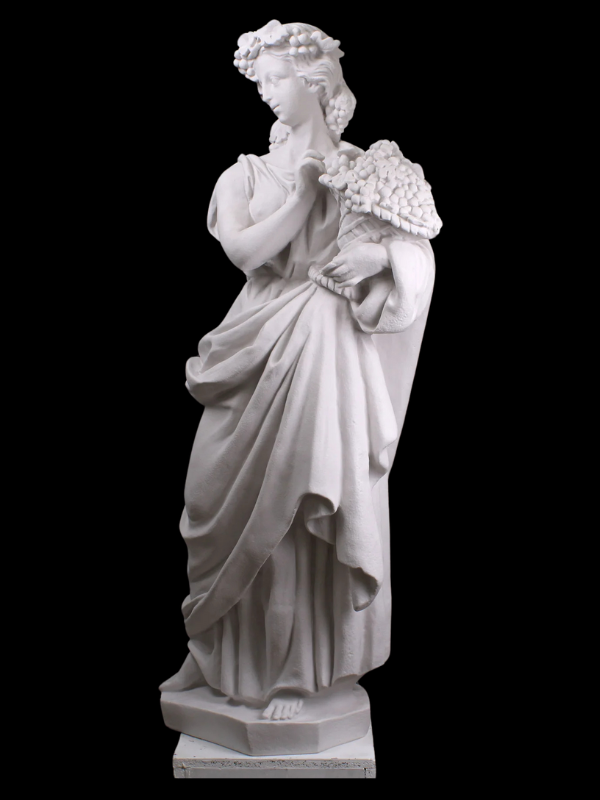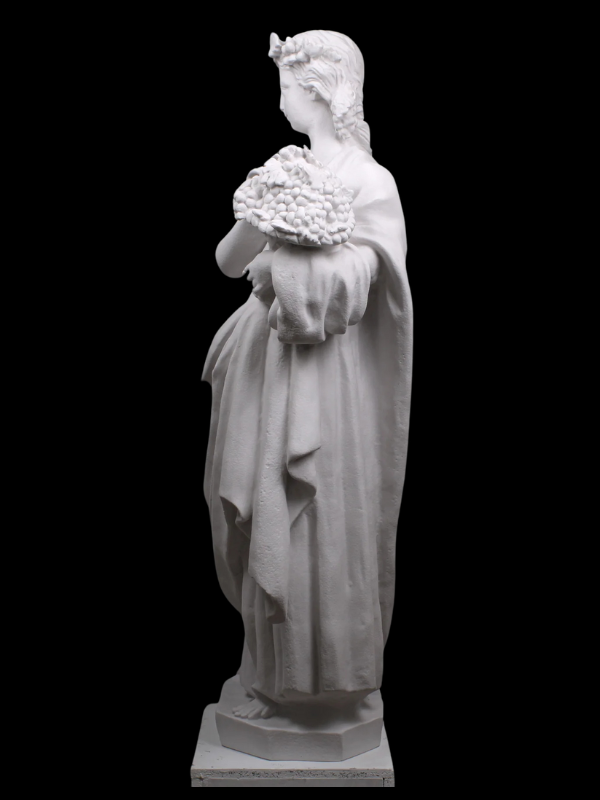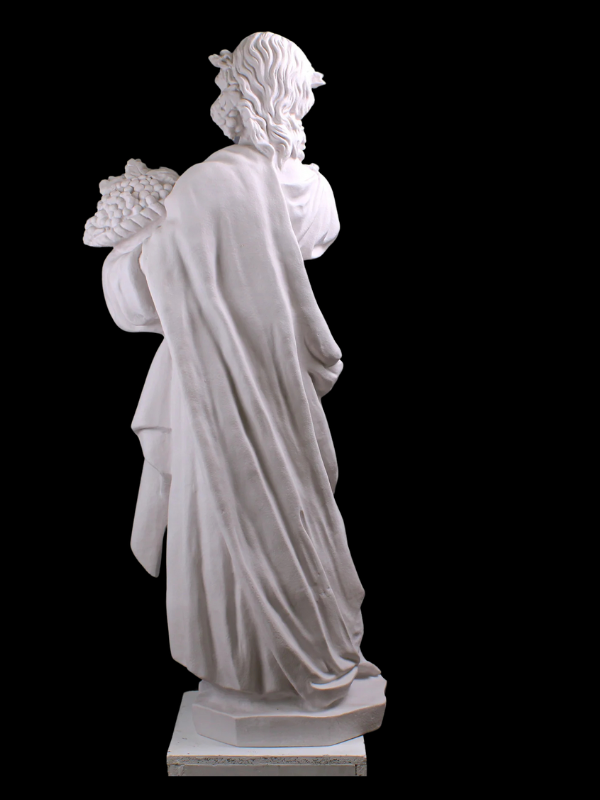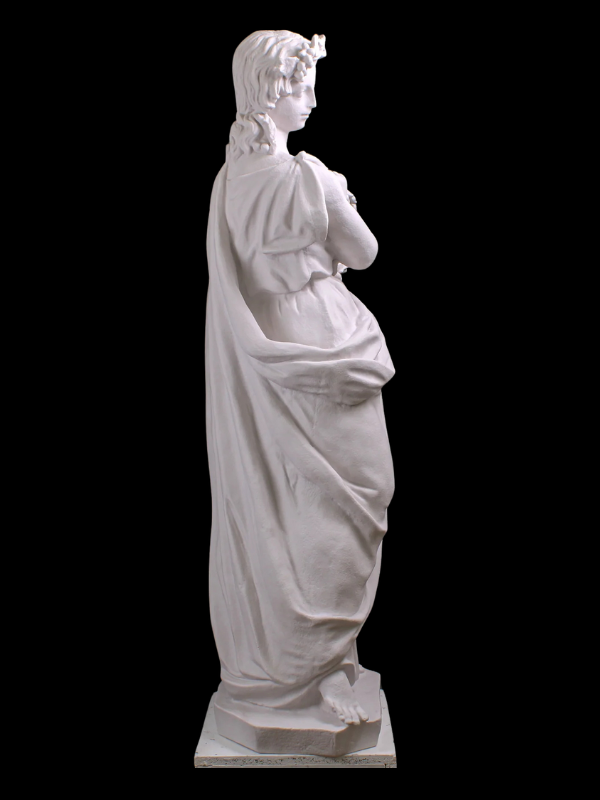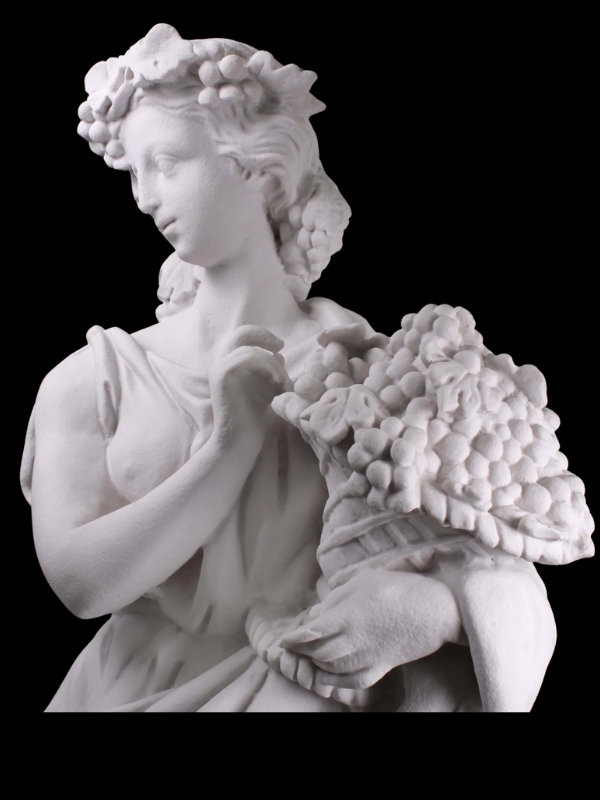Autumn Goddess Statue
Autumn Goddess Statue
Our Autumn Goddess Life-Size Statue on Base, standing at an impressive 130 cm, is a beautiful reproduction that encapsulates the essence of autumn—a season characterized by change, harvest, and the rich colors of nature. This exquisite statue is part of a remarkable collection representing the Four Seasons, inspired by a French original crafted by an unknown artist circa the 19th century. The Autumn Goddess embodies the spirit of the season, symbolizing abundance, transition, and the cycle of life. Through this statue, we will explore the mythology surrounding the Autumn Goddess, the artistic significance of her representation, and the meticulous process of creating this captivating piece.
Understanding the Mythology of the Autumn Goddess
The Autumn Goddess is a symbol of the harvest, transformation, and the fleeting beauty of nature as it prepares for winter. In various mythological traditions, she represents the bounty of the earth and the cycle of life and death.
In Roman mythology, the goddess Ceres is the most notable figure associated with agriculture, grain, and the harvest. Ceres, known as Demeter in Greek mythology, embodies the life-giving forces of nature and the fertility of the earth. She is often depicted holding sheaves of wheat or fruits, representing the abundance that autumn brings. The myth of Ceres and her daughter Persephone highlights the connection between the changing seasons and the cycles of life. When Persephone descends to the underworld, Ceres mourns, leading to the barren winter months. When Persephone returns to the surface in spring, Ceres rejoices, and the earth flourishes once more.
In addition to Ceres, other cultures also celebrate autumn through deities that represent harvest and the changing of the seasons. In ancient Celtic traditions, for example, the goddess Brigid is honored during Imbolc (early February) as a symbol of fertility and the coming spring, while the harvest festivals in the fall recognize the importance of gathering the crops and giving thanks for the earth’s bounty.
The Autumn Goddess is often depicted as a figure adorned with fruits, leaves, and grains, celebrating the abundance of the harvest. Her flowing garments are often depicted in warm, rich colors—hues of orange, gold, and brown—reflecting the changing leaves and the beauty of the autumn landscape. She embodies the idea of gratitude for nature's gifts and the importance of acknowledging the cycles of life as they unfold.
The Artistic Significance of the Autumn Goddess
The Autumn Goddess Statue is not just a representation of a mythical figure; it reflects the artistic ideals of the 19th century, characterized by a reverence for nature, beauty, and the human experience. Artists of this period often sought to capture the emotional depth of their subjects, embracing Romantic ideals that emphasized individual expression and a connection to the natural world.
The design of the Autumn Goddess is marked by graceful lines and harmonious proportions, typical of the beauty ideals prevalent during the 19th century. The statue typically features flowing garments that suggest movement and fluidity, enhancing the sense of vitality embodied in the figure. The attention to detail in the draping of the fabric and the positioning of the body conveys a sense of energy and warmth, mirroring the richness of the autumn harvest.
The choice of materials is crucial in conveying the artistic vision of the Autumn Goddess. The original sculpture, likely crafted from marble or a similar medium, emphasizes the timelessness of the figure and the enduring beauty of autumn. The smooth surface of the statue captures and reflects light, enhancing its visual impact and evoking the warm glow of autumn sunlight.
Moreover, the Autumn Goddess embodies themes of gratitude, transformation, and the cyclical nature of life. Her representation in art serves as a reminder of the importance of appreciating the present moment and recognizing the interconnectedness of all living things. In a world that often rushes forward, the Autumn Goddess invites viewers to pause and reflect on the beauty and abundance that surround them, fostering a deeper connection to the natural world.
Why Own a Autumn Goddess Life-Size Statue on Base?
Owning a reproduction of the Autumn Goddess Life-Size Statue is a unique opportunity to bring a piece of mythological beauty and artistry into your space. This statue serves not only as a stunning decorative element but also as a celebration of the richness and transition associated with autumn, inviting contemplation of nature's cycles and the importance of gratitude for the earth’s abundance.
The Autumn Goddess adds a touch of elegance and warmth to any environment, whether displayed in a home, garden, or gallery. Its striking presence and intricate details serve as a reminder of the beauty of harvest time and the importance of recognizing the cyclical nature of life. The statue embodies timeless themes of transformation and gratitude, inspiring viewers to connect with the natural world and appreciate the changing seasons.
In addition to its aesthetic appeal, the Autumn Goddess is a symbol of cultural heritage, representing the timeless ideals of abundance, transformation, and interconnectedness that have inspired artists and thinkers for centuries. It can serve as a source of inspiration, encouraging viewers to embrace change and appreciate the gifts that each season brings.
In conclusion, our Autumn Goddess Life-Size Statue on Base is a masterful reproduction that captures the essence of this iconic figure. Standing at 130 cm, it is a stunning tribute to the artistry of the 19th century and the enduring legacy of seasonal deities in mythology. Whether you are a lover of classical art, a nature enthusiast, or someone who appreciates beauty, this statue is sure to captivate and inspire. Embrace the elegance and cultural significance of the Autumn Goddess by adding this remarkable piece to your collection, and let it serve as a reminder of the rich history and artistic achievements of our past.
Type: Ancient Greek Decor, Greek Statue, Statue
